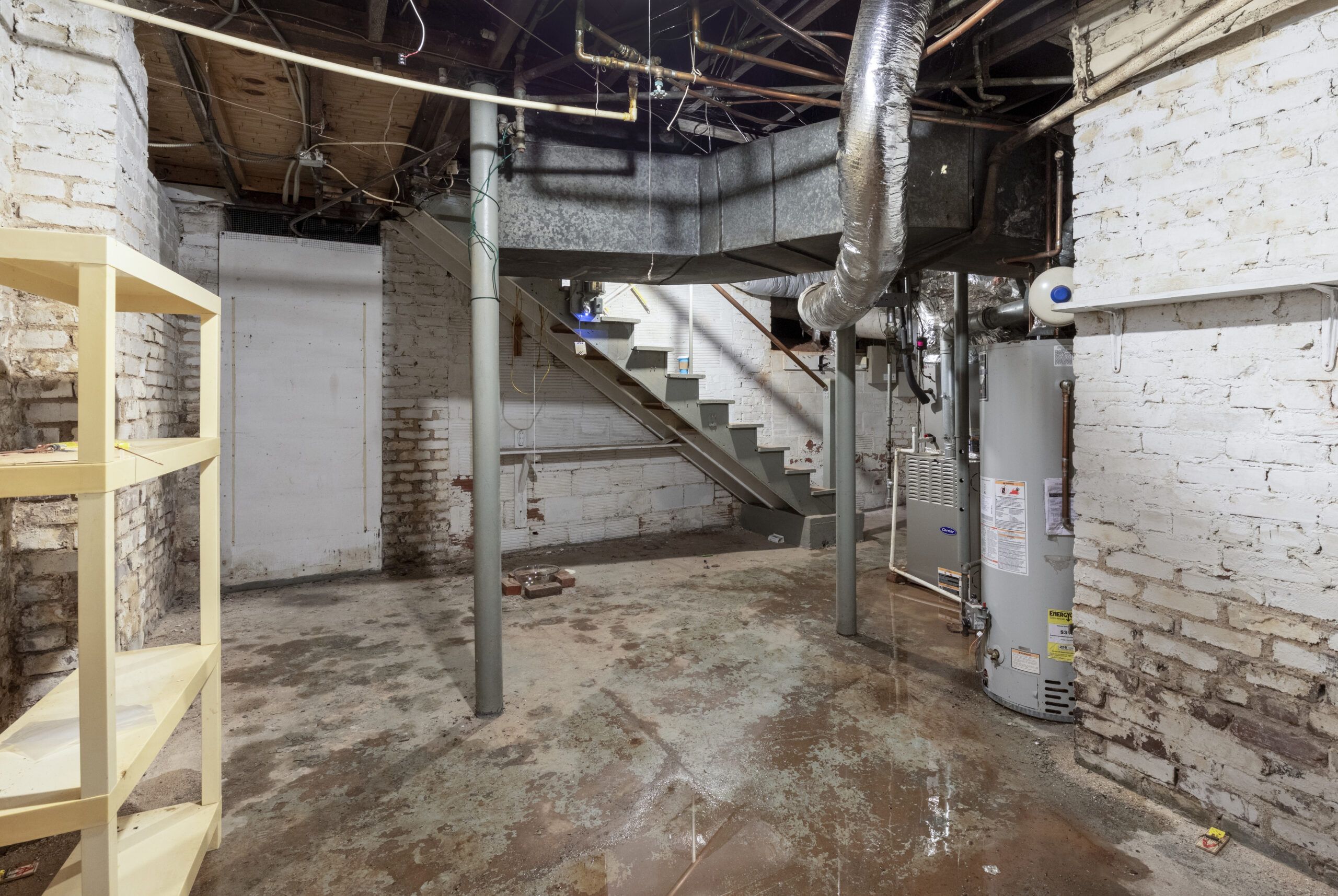
If you spot musty odors, damp walls, efflorescence, mold growth, water stains, cracks in the foundation, peeling paint, rust, standing water, or high humidity levels in your basement, you may be observing early signs of water damage. These signs could indicate underlying issues that, if left unaddressed, may lead to more serious problems. Keep an eye out for these warning signs to protect your basement from potential water damage.
Key Takeaways
- Musty odors indicate mold growth from water intrusion.
- Damp walls signal potential mold and structural risks.
- Efflorescence warns of water seepage and moisture issues.
- Mold growth on surfaces signifies water leaks and health hazards.
- Water stains reveal underlying water damage needing immediate attention.
Musty Odors
If you notice a lingering musty odor in your basement, it could be an important warning sign of water damage. This unpleasant smell is often a result of mold and mildew growth, which thrive in damp environments. As water seeps into your basement through cracks in the foundation or from poor ventilation, it creates the perfect breeding ground for these fungi. Ignoring this musty smell can lead to more severe issues down the line, such as structural damage and potential health risks.
To address this issue, it’s vital to first identify the source of the water intrusion. Check for any visible leaks, standing water, or damp spots in your basement. Inspect the walls, floors, and ceiling for any signs of moisture or discoloration. Additionally, make sure your gutters and downspouts are functioning correctly to prevent water from pooling around your home’s foundation.
Once you’ve identified the source of the water damage, take steps to address it promptly. Repair any cracks in the foundation, improve ventilation in the basement, and consider using a dehumidifier to reduce moisture levels. It’s also essential to remove any mold or mildew growth and properly clean and dry the affected areas to prevent further damage.
Damp Walls
When dealing with basement water damage, damp walls can be a clear indicator of underlying issues that need prompt attention. If you notice moisture seeping through your basement walls, it’s important to address the problem swiftly to prevent further damage. Here are some key points to keep in mind:
- Causes: Damp walls in your basement can be caused by various factors such as poor drainage around the foundation, cracks in the walls, or leaks from plumbing fixtures. Identifying the root cause is essential in effectively addressing the issue.
- Health Risks: Damp walls create a conducive environment for mold and mildew growth, which can lead to respiratory problems and allergies. It’s crucial to tackle dampness promptly to safeguard your health and that of your family.
- Structural Damage: Prolonged exposure to water can weaken the structural integrity of your basement walls, leading to cracks, bulging, or even crumbling. Ignoring damp walls can result in costly repairs down the road.
Efflorescence
Efflorescence, a common phenomenon in basements, occurs when white or grayish deposits form on the surface of walls due to salt deposits left behind by evaporating water. These powdery deposits are a significant indicator of water seepage through your basement walls. When water infiltrates the foundation, it dissolves salts within the concrete. As the water evaporates, it carries these salts to the surface where they crystallize, creating efflorescence.
Spotting efflorescence early can help you address potential water damage issues in your basement. Keep an eye out for these white or grayish deposits on your basement walls, floors, or other surfaces. Efflorescence often appears in a feathery or frost-like pattern, signaling the presence of excess moisture. If left unattended, efflorescence can lead to further deterioration of the concrete, weakening the structural integrity of your basement walls.
To tackle efflorescence, start by identifying and fixing the source of water intrusion. This may involve repairing cracks in the foundation, improving drainage around the house, or installing a sump pump to manage water buildup. Once the underlying issue is resolved, you can remove efflorescence using a stiff brush or a mild acidic solution. However, it’s important to wear protective gear such as gloves and goggles when handling cleaning agents. Remember, efflorescence is more than just a cosmetic issue; it serves as a warning sign of potential water damage that needs your prompt attention.
Mold Growth
Mold growth poses a serious threat to the air quality and structural integrity of your basement. If left unchecked, mold can spread rapidly and lead to health issues for you and your family. Here are some key signs to look out for that could indicate the presence of mold in your basement:
- Critical Odor: A critical smell is often the first sign of mold growth in a basement. If you notice an earthy or damp odor that doesn’t seem to go away, it could be a sign that mold is present.
- Visible Mold: The most obvious sign of a mold problem is the presence of visible mold growth on walls, ceilings, or floors. Mold can appear in various colors, including black, green, or white.
- Water Leaks: Any water leaks or seepage in your basement can create a damp environment that’s conducive to mold growth. Check for signs of water stains, puddles, or dampness, as these can indicate a moisture issue that may lead to mold.
To prevent mold growth in your basement, it’s critical to address any water leaks promptly, promote proper ventilation, and maintain low humidity levels. If you suspect mold in your basement, it’s vital to address the issue immediately to protect both your health and the structural integrity of your home.
Water Stains
If you notice discolored patches on your basement walls or ceilings, it could be a sign of water stains. These stains are often caused by water infiltrating your basement through cracks in the walls or foundation, or from leaks in the plumbing system. Water stains may appear yellowish, brownish, or even greenish in color, depending on the source of the water and the materials it has come into contact with.
Water stains aren’t just unsightly; they can also indicate underlying issues that need to be addressed promptly to prevent further damage. Ignoring water stains can lead to mold growth, structural damage, and potential health risks for you and your family. Consequently, investigating the source of the water stains as soon as you notice them is crucial.
To determine the cause of the water stains, check for any visible cracks in the walls or foundation that could be allowing water to seep in. Inspect the plumbing system for leaks or signs of water damage. Addressing these issues early on can help prevent more extensive water damage and costly repairs in the future.
If you’re unable to identify or resolve the source of the water stains on your own, it may be wise to consult a professional water damage restoration specialist. They can assess the situation, provide expert advice, and help you mitigate the water damage effectively.
Cracks in Foundation
Inspecting your basement’s foundation for cracks is essential to identifying potential sources of water damage. Cracks in the foundation can allow water to seep into your basement, leading to mold growth, structural issues, and other costly problems. Here are three key things to look for when checking your foundation:
- Size and Direction: Pay attention to the size and direction of the cracks. Wide or horizontal cracks are more concerning as they can indicate structural issues and significant water intrusion. Vertical cracks are usually less worrisome but should still be monitored.
- Location: Note the location of the cracks in the foundation. Cracks near windows, doors, or where the foundation meets the ground are more likely to allow water to enter your basement. These areas should be inspected thoroughly and repaired promptly.
- Moisture: Check for any signs of moisture around the cracks. Dampness or water stains near the cracks can indicate active water infiltration. Use a flashlight to inspect dark corners and hidden spots where water damage may not be immediately visible.
Regularly inspecting your basement’s foundation for cracks and addressing any issues promptly can help prevent water damage and maintain the integrity of your home. If you notice any concerning cracks or signs of water intrusion, it’s best to consult with a professional to assess the situation and recommend appropriate repairs.
Peeling Paint
When dealing with peeling paint in your basement, it’s important to identify its potential link to water damage. Peeling paint is often a visible indicator that moisture is present. Water can seep through walls or floors, causing the paint to bubble and peel. This peeling can occur on walls, ceilings, or even floors in extreme cases.
Peeling paint isn’t just an aesthetic issue; it can also serve as an essential warning sign of more significant water damage problems in your basement. If left unaddressed, water damage can lead to mold growth, structural issues, and decreased indoor air quality. Hence, it’s essential to investigate the root cause of the peeling paint and address any water intrusion promptly.
To determine if the peeling paint is indeed a result of water damage, inspect the areas around the affected paint. Look for signs of water stains, mold, or musty odors. These additional indicators can help confirm the presence of water infiltration in your basement. Once water damage is confirmed as the cause, it’s vital to take steps to waterproof your basement to prevent further issues.
Rust and Corrosion
Noticing rust and corrosion on metal surfaces in your basement signals potential water damage concerns that require immediate attention. Rust is a reddish-brown oxide that forms on iron or steel due to prolonged exposure to moisture, while corrosion is the gradual destruction of metal through chemical reactions.
Here are three key points to ponder when dealing with rust and corrosion in your basement:
- Examination: Regularly examine metal pipes, beams, and other structural elements in your basement for any signs of rust or corrosion. Pay close attention to areas near sources of water, such as sinks, water heaters, or sump pumps.
- Moisture Levels: High levels of humidity or moisture in your basement can accelerate the formation of rust and corrosion on metal surfaces. Use a dehumidifier to maintain appropriate humidity levels and reduce the risk of damage.
- Repair and Maintenance: Promptly address any rust or corrosion issues by cleaning the affected areas and applying rust-inhibiting coatings or sealants. If the damage is extensive, consider consulting a professional to assess the situation and make necessary repairs.
Taking proactive steps to address rust and corrosion in your basement can help prevent more serious water damage issues in the future. By staying vigilant and addressing these warning signs promptly, you can protect your home from potential structural damage and costly repairs.
Puddles or Standing Water
To further evaluate potential water damage in your basement, take note of any puddles or standing water that may indicate underlying issues that require immediate attention. Puddles or standing water in your basement are clear indicators of water intrusion and potential water damage. These signs should never be ignored, as they can lead to significant problems if left unaddressed.
Puddles or standing water can result from various sources such as leaks in the foundation, cracks in the walls, malfunctioning sump pumps, or poor drainage around the perimeter of your home. It’s vital to determine the source of the water to effectively address the issue and prevent further damage.
If you notice puddles or standing water in your basement, it’s essential to act promptly. Start by identifying the source of the water and addressing any immediate concerns. Depending on the severity of the issue, you may need to contact a professional to assess the situation and recommend the appropriate course of action.
Ignoring puddles or standing water in your basement can lead to mold growth, structural damage, and decreased indoor air quality. By being proactive and addressing these warning signs promptly, you can prevent more extensive and costly repairs in the future.
High Humidity Levels
Maintaining ideal ventilation is vital in preventing high humidity levels in your basement, as excess moisture can lead to various issues like mold growth and musty odors. Here are some key indicators that your basement may be experiencing high humidity levels:
- Condensation on Windows: If you notice droplets forming on your basement windows, it could be a sign that the humidity levels are too high.
- Musty Odors: A damp, musty smell in your basement is often a clear indication that there’s excess moisture present, leading to potential humidity problems.
- Visible Mold Growth: Mold thrives in moist environments, so if you spot any mold growth on walls, floors, or ceilings, it’s likely due to high humidity levels.
To combat high humidity in your basement, consider using a dehumidifier to regulate moisture levels. Additionally, ensuring proper ventilation by using exhaust fans or opening windows when possible can help reduce humidity.
Regularly inspecting and repairing any leaks or cracks that could be allowing moisture to enter the basement is also essential in preventing high humidity levels and the subsequent issues it can cause.
Frequently Asked Questions
How Can I Prevent Basement Water Damage During Heavy Rainstorms or Floods?
To prevent basement water damage during heavy rainstorms or floods, guarantee your gutters are clear, downspouts direct water away, and grade slopes away from your home. Consider installing a sump pump and waterproofing your basement to further protect against potential damage.
Are There Any DIY Solutions for Addressing Basement Water Damage Before Calling a Professional?
Before calling a professional, you can try DIY solutions for basement water damage. Start by checking for leaks, fixing downspouts, and ensuring proper grading. Clear gutters, seal cracks, and use waterproofing paint. Monitor moisture levels and drainage to prevent further issues.
Can Installing a Sump Pump Help Prevent Basement Water Damage in the Long Term?
Installing a sump pump can help prevent basement water damage in the long term. It effectively removes excess water, reducing the risk of flooding and moisture issues. Regular maintenance and proper installation are key for its effectiveness.
Are There Any Specific Types of Plants or Landscaping Features That Can Contribute to Basement Water Damage?
When it comes to plants and landscaping, be cautious near your basement. Some types can exacerbate water damage. Choose plants with shallow roots and guarantee proper drainage to avoid potential issues. Regularly inspect for any signs of trouble.
How Can I Determine if My Basement Water Damage Is Covered by My Homeowners Insurance Policy?
To find out if your basement water damage is covered by your homeowners insurance policy, check your policy documents or contact your insurance provider directly. They can provide details on what types of water damage are included.
Conclusion
Lifetime Basement Waterproofing has been Atlanta’s premier basement waterproofing company for over 30 years. As a family-owned and operated company, we specialize in basement waterproofing in Canton, Ga and offer expert services in crawlspace encapsulation, exterior foundation waterproofing, foundation crack repair, and drainage strategy for French drains.
When it comes to wet basement repair needs, you can trust Lifetime Basement Waterproofing to provide top-quality solutions.
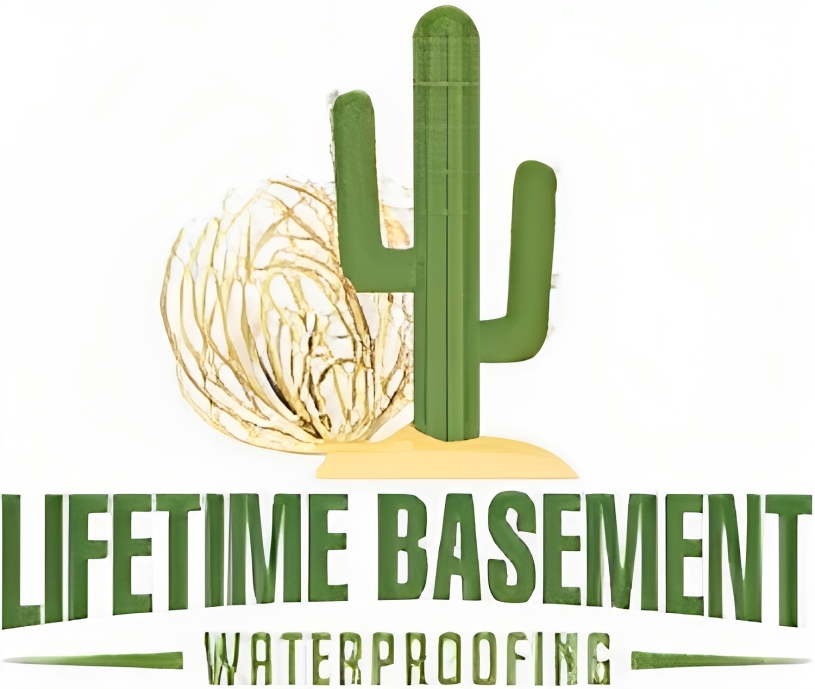

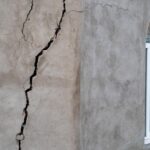
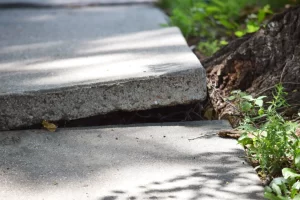
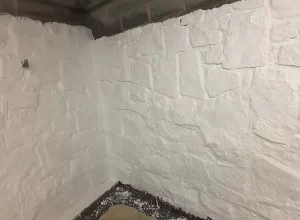
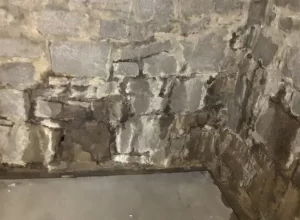
No comment yet, add your voice below!